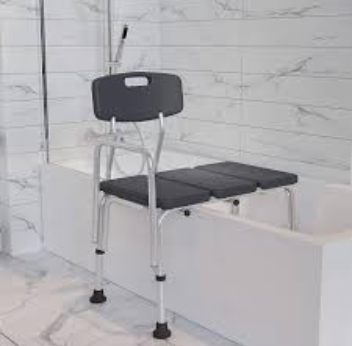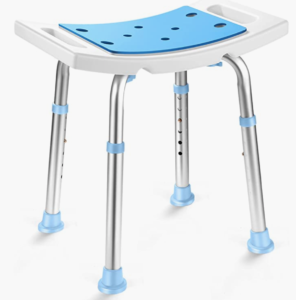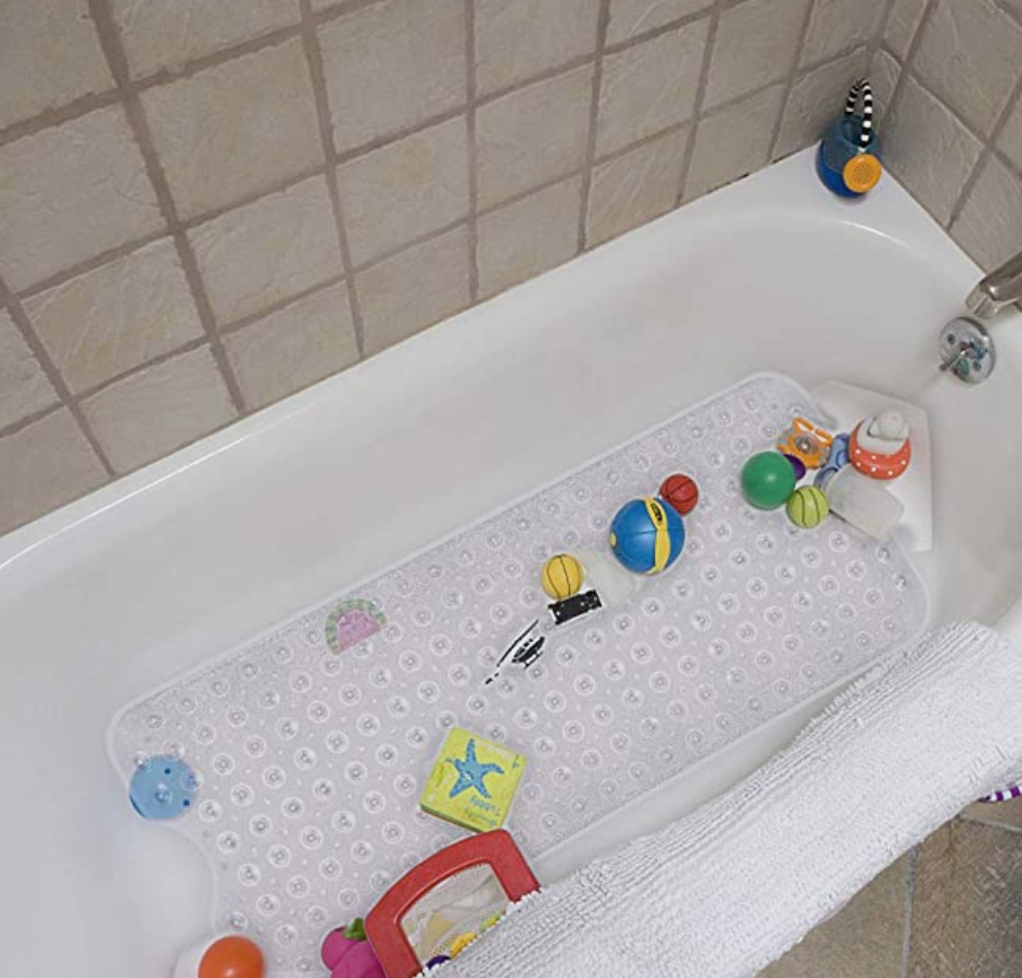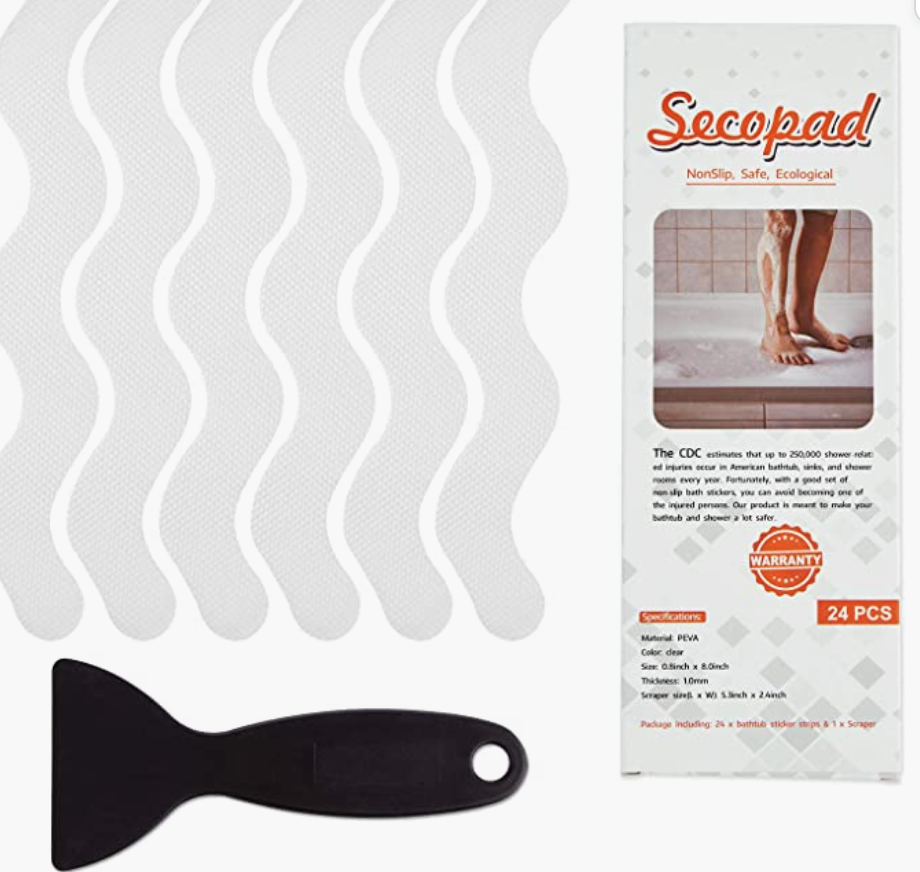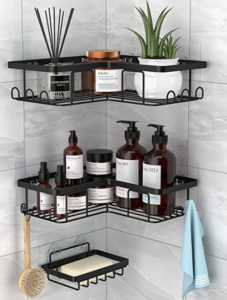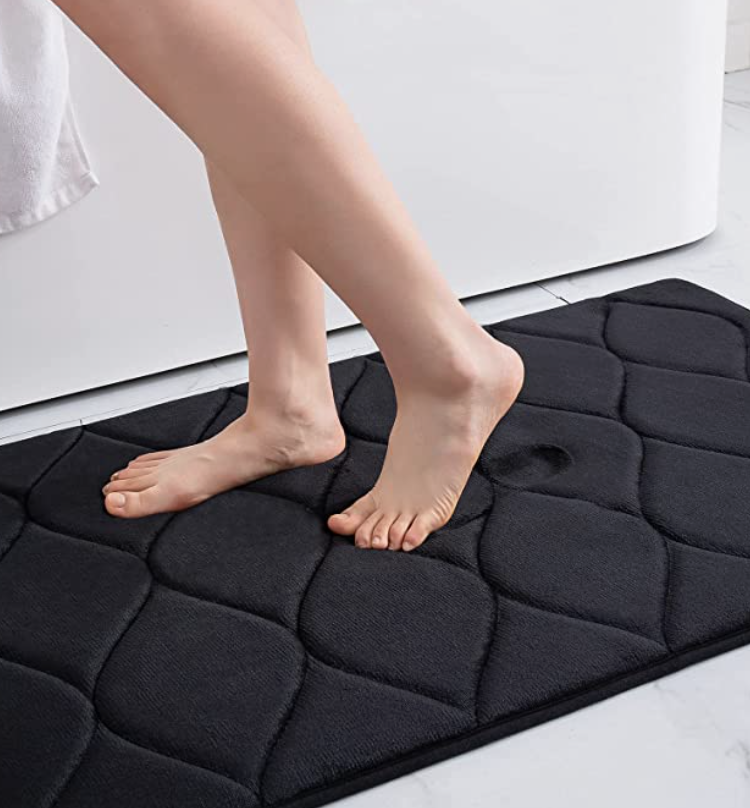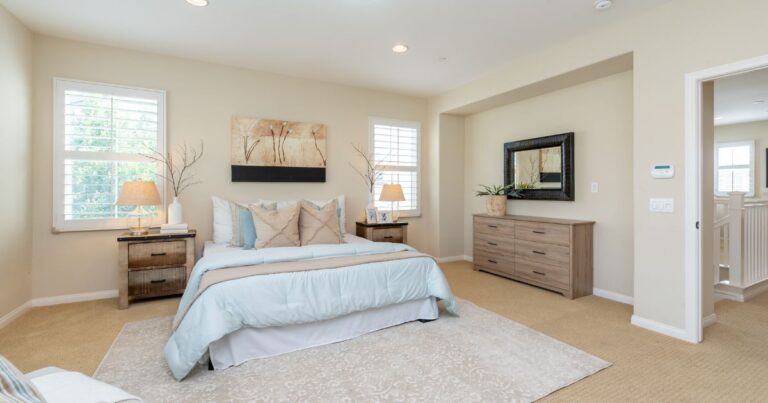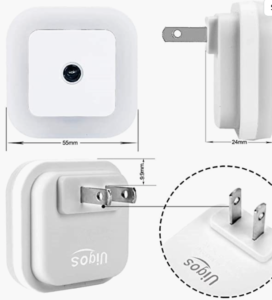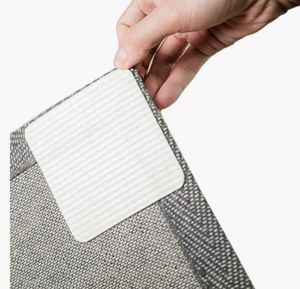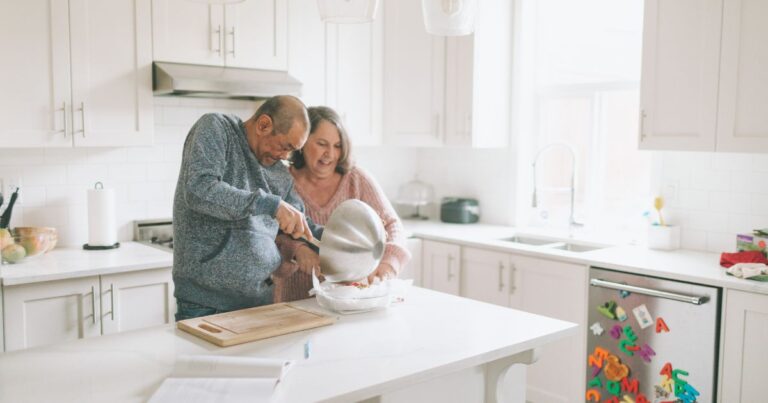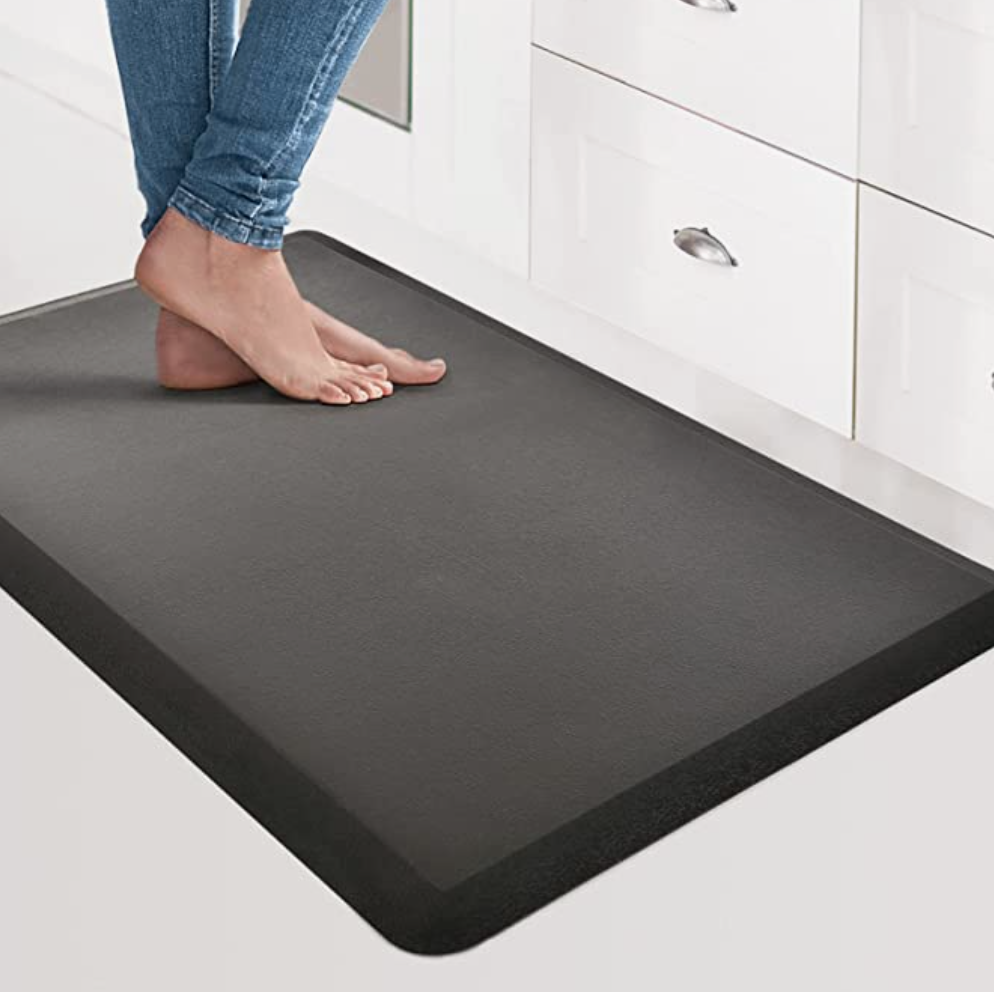Home is your safe space, so it makes perfect sense to want to stay there as you age. Maintaining safety for seniors living alone is key to being able to stay in their home for the long term. This can be as simple as making a few simple purchases for different rooms to make them more accessible, and/or doing larger projects to maintain accessibility. If you’re a caregiver reading this, you’re likely concerned about an aging parent, and this will give you some simple tools to help. If you’re an older adult, using this guide can help ease your family’s minds. This room by room safety guide will help you understand the current liabilities in your home set up and help you to address them before they become a problem.
The three largest concerns that we address around aging safely while living alone are
- Reducing risk of falls
- Setting up items to be accessible in the home
- Maintaining safe access to and in your home
Bathroom Safety for Older Adults
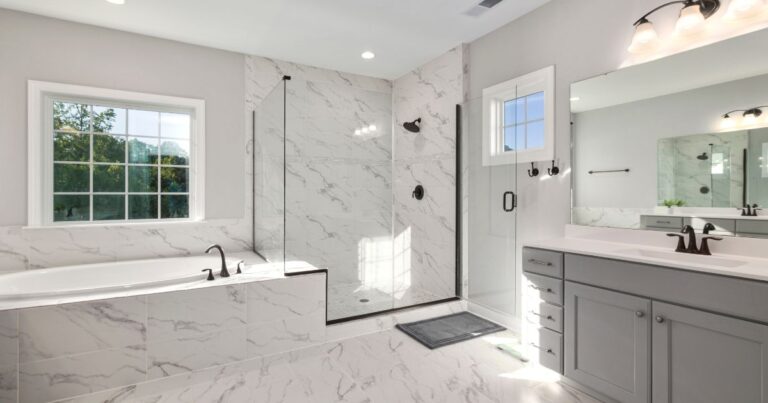
Why is the bathroom the most dangerous for seniors?
It tends to be a bit tighter space with less room to navigate and pick up objects that could drop to the floor.
The flooring also tends to be harder and tile, which can be “slippery when wet.” A fall here tends to be more dangerous due to there being less space and more hard objects to collide with.
Getting into and out of the shower or tub with the slick surfaces can also pose a hazard, so if you have difficulty a shower chair or transfer bench is appropriate.
A bench can be more ideal for a tub/shower combo due to being able to adjust the legs to an appropriate height. This allows you to accommodate the differences between the height of the bathroom floor and the tub surface. It also allows you to sit down outside the tub and then slide across over the tub so that you don’t have to bring your leg over the side while standing.
Shower chairs can be ideal for walk in showers, or if you don’t have difficulty with getting your leg over the side of the tub but still have trouble standing while washing.
This can be for those with spinal stenosis or those who have arthritis or low blood pressure. It’s also great for those with sensation issues in the feet, like diabetic neuropathy.
It’s also a great option for those who suffer from dizziness as a side effect of medication to limit risk for falls.
Tub/Shower Safety for Older Adults
For the tub or shower surface itself, it is ideal to create as much traction as possible so that if you do lose your balance, you are more likely to recover. Options for this include non slip mats or anti-slip shower stickers. Non-slip mats can be more comfortable for your feet or grandkids’ behinds and provide extra cushion, but there is a risk of the suction cup coming loose and creating a fall hazard. Anti-slip shower stickers create extra traction and will not slide. You can always have both to keep you and your grandkids safe.
A shower caddy that allows you to adjust the height is great to keep all of your items stored at a comfortable level to limit excessive reaching. It is also a good idea to get a waterproof phone case and store your phone on the caddy or the tub edge while bathing. This is perfect for you to reach in case of emergencies.
Grab bars
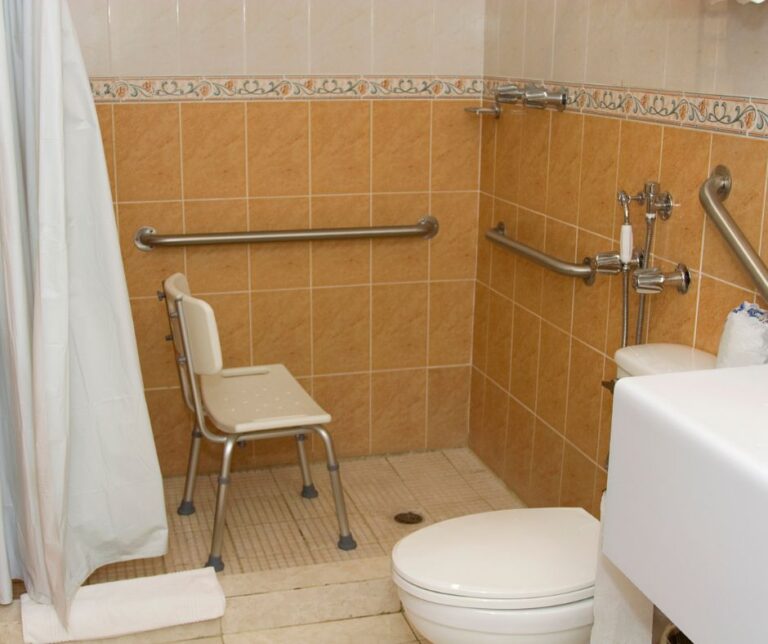
Rugs
Rugs should have a rubberized surface on the bottom so that they don’t slip. Alternatively, you can attach non-slip pads to the bottom of any mat. Look out for mats rolling up which can lead to increased risk for falls. This is more likely to happen if you use a cane or walker.
Toilet Set Up for Older Adults
A standard toilet is only 15 inches high, and this can be difficult to reach for those with arthritis or stiffness in the low back or hips.
A raised toilet seat can be a good option, and the handles help with getting on and off the toilet while preventing falls. Ensuring a proper fit to your toilet bowl shape is important. For less worries about fit, a stand alone raised toilet seat is ideal.
Other Tips:
- If you have difficulty twisting and reaching your toilet paper, consider a free-standing toilet paper holder.
- Consider changing a shower curtain to shower doors for increased stability and extra handles in the shower. This can help you keep your balance, especially if you still stand while washing.
- Getting a removable shower head for easier time bathing with a shower chair.
- You can also consider a walk in bathtub for greater accessibility.
- Make sure that your water temperature is set to no higher than 120 degrees to prevent scalding.
Bedroom Set up for Seniors Living Alone
About 30% of falls that take place at home occur in the bedroom. Much of this can be due to difficulty with getting in and out of bed or poor lighting and getting up to use the restroom while still being groggy from sleep.
Bed Setup for Older Adults
Many falls occur with getting in and out of bed. If you have a higher bed, consider a step stool with a handle to allow yourself to get on and off without the risk of slipping off of the side.
Some medications or conditions can cause disturbed sleep which can lead to falling out of bed. As an alternative to bed rails, which can cause entrapment, consider placing pool noodles under the sheets at the edges of the bed for a quick and cheap fix. You can also push them down the side of the mattress to get out of bed.
Lighting to Prevent Falls
Ensure that you have adequate lighting and night lights to line your path to all exits, especially to the bathroom. Make sure the way is free of obstacles so that you don’t trip. Be sure to place the bed as close to the restroom as possible and try not to hurry as this increases your risk of falls.
Nightstand Organization for Elderly
- Choose a sturdy nightstand with a light on it that is easy to reach.
- Keep your phone beside your bed in case of emergency or a power outage.
- Always keep a flashlight as a backup so that you can see to navigate your home in case your phone dies.
- Ensure that the nightstand is big enough to store remotes, glasses, and a glass of water so they are accessible during the night.
Closet Organization for Older Adults
- Organize your closet in a way that it is easy to access your most used items and place them at chest height to avoid excessive reaching.
- Purchase organizers to store shoes and other frequently used accessories to keep them off the floor.
- Ensure that drawers are easy to open and don’t catch.
Hallway Safety for Seniors Living Alone

Just as in the bedroom, line your hallway with night lights to increase visibility.
Decrease tripping hazards by limiting decorative items in the walkway and along walls. This can be especially helpful if you find yourself needing to balance yourself by touching the walls.
Flooring
As carpet ages, it can bunch and create a hazard. Floor boards can also start to come loose. Ensure that all flooring is laying flat to prevent the catching of toes, which can cause a fall.
Fire Safety for Seniors
Change all smoke detector batteries every 6 months. Create a fire safety plan and determine how you will exit your home if certain areas are blocked.
Living Room Safety Guide For Seniors
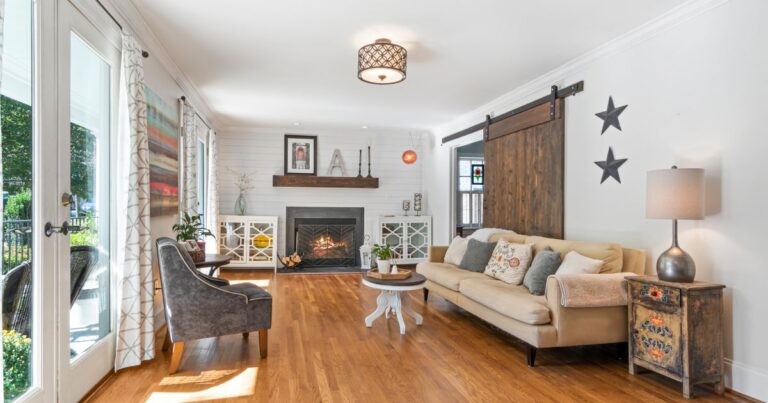
Living Room Layout for Older Adults
As in other rooms, make sure that there is no excessive clutter. This could become a tripping hazard. Also, limit extra accessories on tables and the floor in case you need to grab onto something to steady yourself.
Set up the furniture layout to be as open as possible so you have plenty of room to navigate. Try to arrange furniture to limit the need to change directions while walking as frequently. This will decrease the chances for tripping or losing balance.
Avoid having cords near walkways. If this is unavoidable, use cord covers to limit the possibility of tripping.
Lighting in Living Room for Seniors Living Alone
Use remote-controlled lights and lamps to limit risk of overreaching or losing balance trying to turn lights on or off.
Night lights should be included in this room as well. A lot of time is spent in this room in the evening hours.
Ensure overhead lighting is adequate to prevent shadows and glares. This also limits eye strain while reading or performing other tasks. As we age, our eyes have more trouble adjusting to changes in the amount of light coming into them, so this can increase risk for falls.
Limit use of area rugs that can roll up on the ends. If they are present, make sure the corners are adhered to the floor with non-slip grippers so they don’t shift.
Living Room Furniture for Older Adults
Consider having furniture with sturdy, higher arm rests to aid with standing from lower or softer surfaces. Lift chairs can also be a good purchase depending on your mobility needs.
For an easier fix, you can also add a rail to your current couch to help with pushing up to stand.
Kitchen Safety for Aging Adults
The kitchen can be another room with a lot of hazards when aging in place. Similar to the bathroom, kitchen floors can be slippery when wet, so it’s important to clean up spills or dripped water immediately. If reaching the floor is difficult, consider having a Swiffer handy, especially while washing dishes.
Wear anti-slip socks or shoes to limit risk for falls on slick surfaces.
Layout and Organization
Take up throw rugs that can become rolled under foot or assistive devices. Use anti-fatigue mats with beveled edges to limit fall risk.
Make sure that there is enough room to comfortably turn around, open the fridge door, and open drawers. There should be plenty of space to accommodate an assistive device.
Place the most frequently used items so that they can be easily accessed. Larger appliances or heavier cookware should be on shelves that are about waist height so they can be reached without excessive bending. Additionally, consider investing in lighter pots and pans by downsizing so they are easier to lift. Get a step stool with a handle to increase safety when accessing higher shelves.
Organize drawer spaces to decrease the need for turning and changing directions multiple times. For instance, place the silverware drawer right next to the bowls and cups as well as the dishwasher if possible. This limits the need to move around while putting items away or preparing a meal.
Safe Utensils for Older Adults
Change bowls and cups to plasticware to limit the risk of shattered glass. This limits the risk for cuts from shattered glass and eliminates difficult cleanup, especially if you have limited mobility.
Store knives near the silverware in a block to limit the risk for cuts. If they are in a drawer or caddy, it is easier to cut yourself while reaching for one.
Other Safety Considerations in the Kitchen
While cooking, have a chair or stool near the counter to allow for rest breaks. This is especially helpful if you have spinal stenosis, arthritis, or another condition that makes standing for longer periods difficult.
Consider technology like an Alexa to help with setting timers and reminders. This can limit the risk for fires and forgetting medications.
Store all medications in an easy to reach location. You can use a pill sorter for convenience if you feel comfortable organizing your medications appropriately. Ensure that you monitor for any side effects, especially with new medications. These could increase your risk for falls or medical emergencies.
Keep the kitchen clean to limit risks for fires and food-borne illnesses. If you are having difficulty, consider hiring a maid service. If this is not an option, complete tasks a little at a time. This will help limit fatigue and risk of strain or injury.
Fire and Emergency Services
Create a document for emergency services and store it on your fridge. This should include:
- Emergency contacts with their relation to you and phone number
- Primary care physician’s contact
- Current medication list with any known allergies
- Any active medical conditions
- Any recent surgeries
If there is a need, emergency services are trained to look in this location. This allows them to gather your medical information quickly in case you are unresponsive.
Entry Points and Doorway Safety for Senior Adults
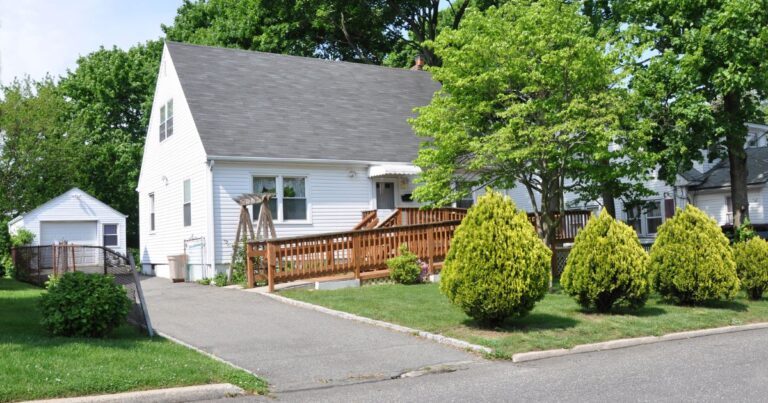
Exterior Home Safety for Seniors
Maintaining your ability to navigate inside of your home is important, but it is equally important to have safe entrances and exits. Make sure that areas around entry ways are clear of debris or fall hazards. Ensure that there are no large cracks or uneven ground near access points.
Consider the impact of the weather on the surfaces around your home. Do you live where it rains or snows frequently? Take this into account when choosing materials for stairs and walking paths. Grip tread, sold at many local hardware stores, can help prevent falls on wet surfaces.
Interior Door Modifications for Aging Adults
Thresholds should be easy to step over. If needed, threshold ramps are easy to install and do not require carpentry work. They can improve the ability of wheelchairs and other assistive devices to enter and exit interior rooms.
Consider changing which way doors open to make access and walkways easier to navigate. This can be particularly helpful for bathroom doors and create more usable space in the room.
Offset door hinges are a great option to allow the door to swing out of the frame. This provides an additional two inches of clearance to help with getting a wheelchair or other assistive device through.
Stairway Safety for Older Adults
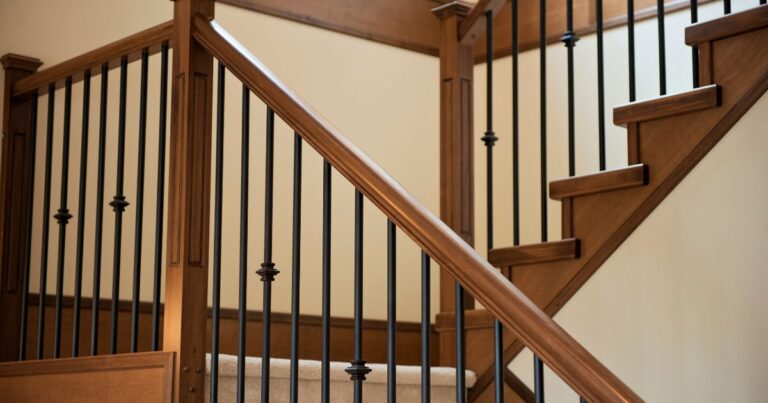
Make sure both exterior and interior stairs are well lit. Have a light switch at the top and bottom of the stairs when possible, and install motion lights outdoors. Exterior stairs should be checked for any unstable or uneven surfaces. Install railings on both sides to improve accessibility.
If you or a loved one are unable to use stairs anymore, consider building a ramp. It should be built in a 1:12 ratio for height to length. This means that for every foot of elevation gain, there should be 12 feet of length to be safe and operational.
For indoor staircases, consider a stair lift if the upstairs must be accessed. When possible, try to rearrange so that the senior’s daily needs are accessible on one level.
Final Considerations for Aging Safely Alone at Home
Educating yourself on the risks, simple renovations, and maintenance needed to age in place can seem overwhelming. Being aware of the dangers and planning ahead can allow you to create a perfect oasis for your golden years.
Even with all of the adaptive equipment available, this is only part of the equation. To stay safe at home, you should also focus on improving your mobility, endurance, and strength so that you can take care of yourself and do the things that you love. We want to see seniors build resilience so that they can enjoy their lives to the absolute fullest.
If you have further questions about specific product recommendations for you or would like a home assessment along with a custom mobility and strengthening program, set up a virtual consultation with us by clicking here. For those near Peachtree City, Georgia, in-home safety assessments are available by calling (717) 315-8999 and speaking to Ashley.
What's included?
- 30-minute assessment of personal factors that could be limiting ability to age safely in home
- Customized strength and mobility program to improve ability to age safely living alone
- FREE self-assessment checklist to re-evaluate over the years
Additional Resources
- Factors that lead to increased fall risk
- 7 Quick Tips to Prevent Falls at Home
- Benefits of Adaptive Home Equipment for Bathroom and Bedrooms

Ashley and Megan started Intuitive Choice Physical Therapy and Wellness to provide alternatives to our broken healthcare system and create the opportunity to serve their clients like family. We look forward to partnering with you on your journey toward true wellness.


